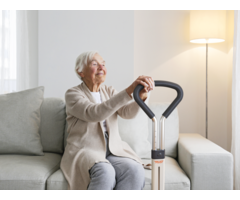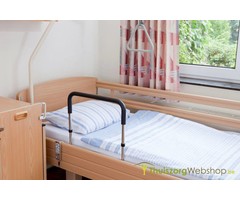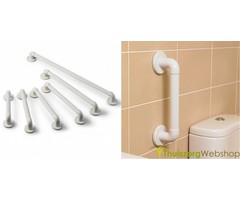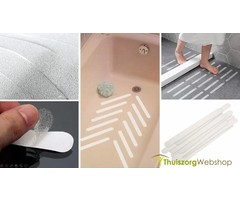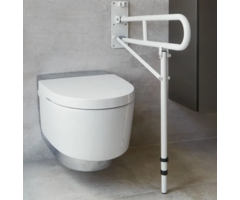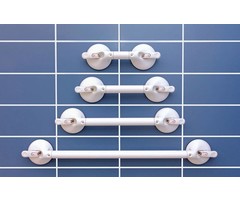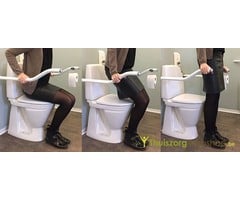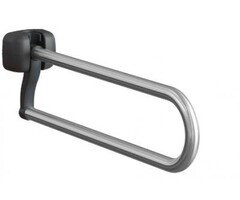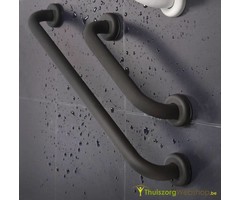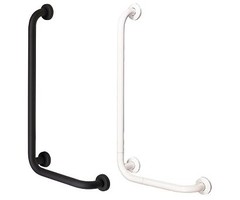
Fall prevention
"One in three seniors will fall this year, but fewer than half will talk to their doctors about it." Falls are also the leading cause of injuries in seniors, resulting in hip fractures, cuts and even serious head and brain injuries that can be fatal. And even if there is no serious injury, a fall can still be so frightening that seniors avoid certain activities because they are afraid they will fall again.
Whether it is slippery floors, rickety stairs or electric cords, some of the most common causes of falls are indoors where you may have a false sense of security. That is why fall prevention starts with creating a safe living space.
This does not have to be a complete renovation of your house. You can protect your house from falling with just a few basic changes. Experienced healthcare professionals provide the following advice to prevent falling at home:
- Clean up mess. The easiest method to prevent falls is to keep your house tidy and tidy. Remove all debris, such as piles of old newspapers and magazines, especially from corridors and stairs.
- Repair or remove tripping hazards. Sometimes household fixtures can contribute to falls, which can then lead to back pain and other injuries. Study each room and corridor, looking for items such as loose carpet, slippery rugs or wooden floorboards that stick up. Then repair, remove or replace these items for more effective fall prevention.
- Install handles and handrails. These safety features are crucial for going up and down stairs, going up and down the toilet, and getting in and out of the bath without harming yourself. It is generally suggested to install handles at toilets and bathtubs and handrails in stairs and corridors. Have a handyman or family member help with this if necessary.
- Do not wear loose clothing. You want to feel comfortable at home, but loose clothing can sometimes make you fall more. Opt for better fitting and well-hemmed clothing that does not accumulate or drag over the ground.
- Turn on the light well. Inadequate lighting is another major hazard. To create a home that is more suitable for the elderly, install brighter lamps where needed, especially near stairs and narrow corridors. It is also recommended to add night lighting in bedrooms and bathrooms for better guidance at night.
- Wear shoes. Socks can be comfortable, but they pose a risk of skidding. Preventing falls at home can be as simple as wearing shoes. You can also buy non-slip socks that have a grip on the soles of the feet if shoes are too uncomfortable.
- Make slippery places non-slip. Bathtubs and showers, as well as floors in kitchens, bathrooms and verandas, can become extremely dangerous when wet. Anti-slip mats are recommended to prevent falling on slippery surfaces.
- Live on one level. Even with precautions such as brackets, stairs can pose a significant risk of falling. If possible, live on one level or be extra careful when ascending or descending stairs. If it is not possible to live on one level, try to limit the movements that you take up and down the stairs.
- Move carefully. Many people fall home by moving too quickly from a sitting to a standing position and vice versa. This way you prevent falling as easily as taking the time. All you have to do is take a break after moving from lying to sitting and from sitting to standing. Also take a break before using the railing on stairs, whether you go up or down.
- For the elderly, fall prevention means injury prevention. Ask your loved ones to help you make sure that your rooms and stairs are clutter-free and well-equipped with lights, handrails, handles and anti-slip mats to prevent you from falling - this can help you a long way to keep you safe keep it in your house.
"One in three seniors will fall this year, but fewer than half will talk to their doctors about it." Falls are also the leading cause of injuries in seniors, resulting in hip fractures, cuts and even serious head and brain injuries that can be fatal. And even if there is no serious injury, a fall can still be so frightening that seniors avoid certain activities because they are afraid they will fall again.
Whether it is slippery floors, rickety stairs or electric cords, some of the most common causes of falls are indoors where you may have a false sense of security. That is why fall prevention starts with creating a safe living space.
This does not have to be a complete renovation of your house. You can protect your house from falling with just a few basic changes. Experienced healthcare professionals provide the following advice to prevent falling at home:
- Clean up mess. The easiest method to prevent falls is to keep your house tidy and tidy. Remove all debris, such as piles of old newspapers and magazines, especially from corridors and stairs.
- Repair or remove tripping hazards. Sometimes household fixtures can contribute to falls, which can then lead to back pain and other injuries. Study each room and corridor, looking for items such as loose carpet, slippery rugs or wooden floorboards that stick up. Then repair, remove or replace these items for more effective fall prevention.
- Install handles and handrails. These safety features are crucial for going up and down stairs, going up and down the toilet, and getting in and out of the bath without harming yourself. It is generally suggested to install handles at toilets and bathtubs and handrails in stairs and corridors. Have a handyman or family member help with this if necessary.
- Do not wear loose clothing. You want to feel comfortable at home, but loose clothing can sometimes make you fall more. Opt for better fitting and well-hemmed clothing that does not accumulate or drag over the ground.
- Turn on the light well. Inadequate lighting is another major hazard. To create a home that is more suitable for the elderly, install brighter lamps where needed, especially near stairs and narrow corridors. It is also recommended to add night lighting in bedrooms and bathrooms for better guidance at night.
- Wear shoes. Socks can be comfortable, but they pose a risk of skidding. Preventing falls at home can be as simple as wearing shoes. You can also buy non-slip socks that have a grip on the soles of the feet if shoes are too uncomfortable.
- Make slippery places non-slip. Bathtubs and showers, as well as floors in kitchens, bathrooms and verandas, can become extremely dangerous when wet. Anti-slip mats are recommended to prevent falling on slippery surfaces.
- Live on one level. Even with precautions such as brackets, stairs can pose a significant risk of falling. If possible, live on one level or be extra careful when ascending or descending stairs. If it is not possible to live on one level, try to limit the movements that you take up and down the stairs.
- Move carefully. Many people fall home by moving too quickly from a sitting to a standing position and vice versa. This way you prevent falling as easily as taking the time. All you have to do is take a break after moving from lying to sitting and from sitting to standing. Also take a break before using the railing on stairs, whether you go up or down.
- For the elderly, fall prevention means injury prevention. Ask your loved ones to help you make sure that your rooms and stairs are clutter-free and well-equipped with lights, handrails, handles and anti-slip mats to prevent you from falling - this can help you a long way to keep you safe keep it in your house.
"One in three seniors will fall this year, but fewer than half will talk to their doctors about it." Falls are also the leading cause of injuries in seniors, resulting in hip fractures, cuts and even serious head and brain injuries that can be fatal. And even if there is no serious injury, a fall can still be so frightening that seniors avoid certain activities because they are afraid they will fall again.
Whether it is slippery floors, rickety stairs or electric cords, some of the most common causes of falls are indoors where you may have a false sense of security. That is why fall prevention starts with creating a safe living space.
This does not have to be a complete renovation of your house. You can protect your house from falling with just a few basic changes. Experienced healthcare professionals provide the following advice to prevent falling at home:
- Clean up mess. The easiest method to prevent falls is to keep your house tidy and tidy. Remove all debris, such as piles of old newspapers and magazines, especially from corridors and stairs.
- Repair or remove tripping hazards. Sometimes household fixtures can contribute to falls, which can then lead to back pain and other injuries. Study each room and corridor, looking for items such as loose carpet, slippery rugs or wooden floorboards that stick up. Then repair, remove or replace these items for more effective fall prevention.
- Install handles and handrails. These safety features are crucial for going up and down stairs, going up and down the toilet, and getting in and out of the bath without harming yourself. It is generally suggested to install handles at toilets and bathtubs and handrails in stairs and corridors. Have a handyman or family member help with this if necessary.
- Do not wear loose clothing. You want to feel comfortable at home, but loose clothing can sometimes make you fall more. Opt for better fitting and well-hemmed clothing that does not accumulate or drag over the ground.
- Turn on the light well. Inadequate lighting is another major hazard. To create a home that is more suitable for the elderly, install brighter lamps where needed, especially near stairs and narrow corridors. It is also recommended to add night lighting in bedrooms and bathrooms for better guidance at night.
- Wear shoes. Socks can be comfortable, but they pose a risk of skidding. Preventing falls at home can be as simple as wearing shoes. You can also buy non-slip socks that have a grip on the soles of the feet if shoes are too uncomfortable.
- Make slippery places non-slip. Bathtubs and showers, as well as floors in kitchens, bathrooms and verandas, can become extremely dangerous when wet. Anti-slip mats are recommended to prevent falling on slippery surfaces.
- Live on one level. Even with precautions such as brackets, stairs can pose a significant risk of falling. If possible, live on one level or be extra careful when ascending or descending stairs. If it is not possible to live on one level, try to limit the movements that you take up and down the stairs.
- Move carefully. Many people fall home by moving too quickly from a sitting to a standing position and vice versa. This way you prevent falling as easily as taking the time. All you have to do is take a break after moving from lying to sitting and from sitting to standing. Also take a break before using the railing on stairs, whether you go up or down.
- For the elderly, fall prevention means injury prevention. Ask your loved ones to help you make sure that your rooms and stairs are clutter-free and well-equipped with lights, handrails, handles and anti-slip mats to prevent you from falling - this can help you a long way to keep you safe keep it in your house.



